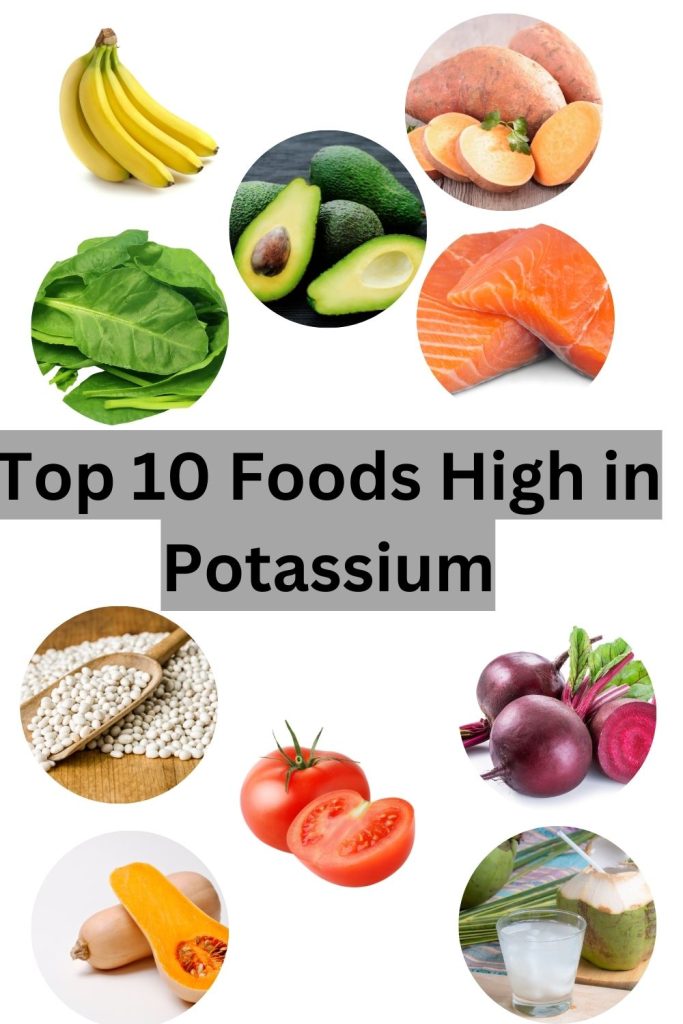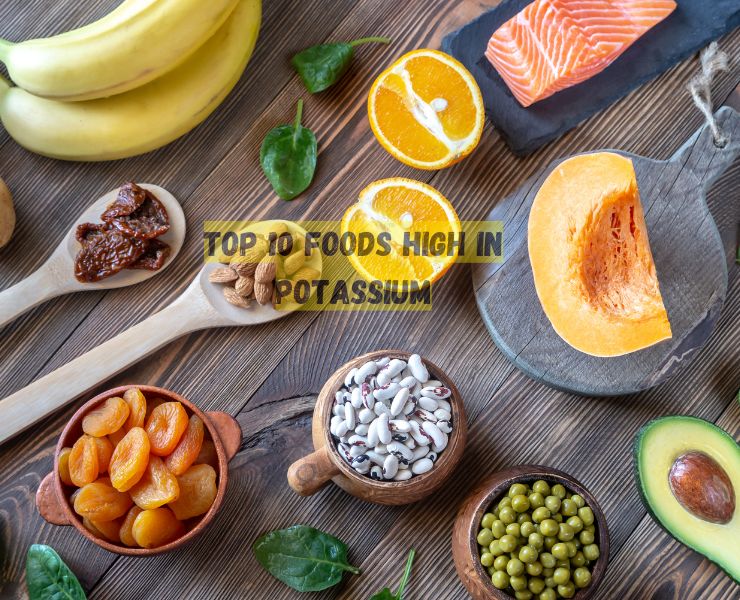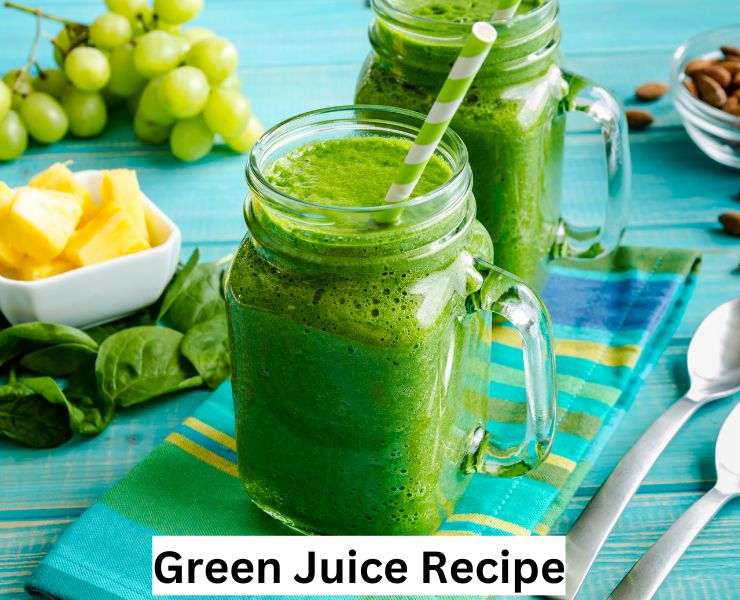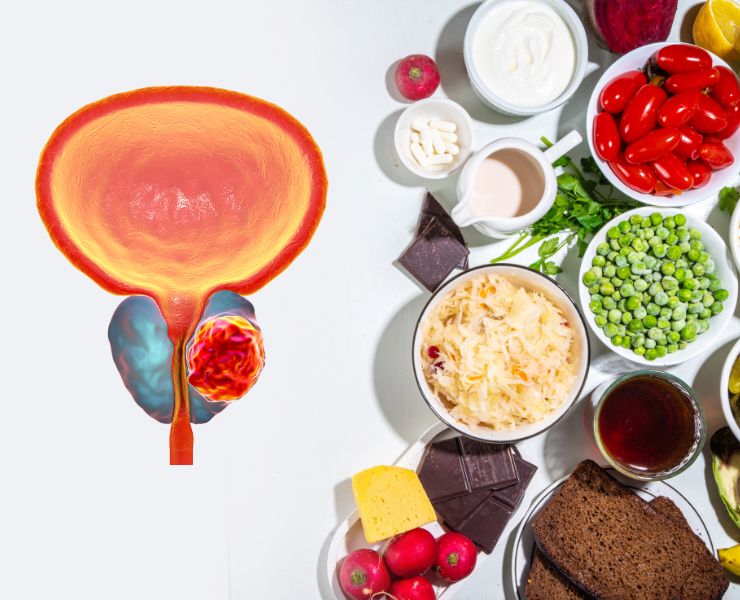We’ve all heard the saying, “You are what you eat.” But how often do we think about potassium when we plan our meals?
Potassium might not be the most famous nutrient, but it’s a silent hero.
It helps keep your nerves, muscles, and heart working smoothly. Think of it as the body’s electrical conductor, balancing fluids and ensuring your cells communicate properly.
The recommended daily intake of potassium varies by age, but for adults, it’s typically around 2,500 to 3,000 mg. Let’s dive into why this number matters so much.
Health Benefits of Potassium-Rich Foods
Eating foods high in potassium can lower your blood pressure, protect against strokes, and prevent kidney stones. It also reduces water retention, which is why you often feel less bloated when your potassium levels are in check.
Why Potassium is Essential for the Body
Imagine trying to turn on your lights without electricity—it’s impossible. That’s how your muscles and nerves would feel without enough potassium.
In fact, potassium balances your body’s fluids and works alongside sodium to ensure your nerves and muscles function well. It’s not just about preventing cramps—potassium can help keep your heart beating regularly too. Pretty important, right?
What is Potassium? And Why Do You Need It?
Potassium is a mineral, but it’s not just sitting around in your body doing nothing.
It’s actively helping your muscles contract, your nerves send signals, and your heart beat at a steady pace. Here’s why you need it:
Potassium’s Role in Bodily Functions
Potassium plays a huge role in keeping everything balanced. It’s part of what we call electrolytes—minerals that help conduct electrical charges throughout your body.
When you sweat, exercise, or even when you’re just sitting, your body constantly uses potassium to maintain healthy fluid levels.
The Link Between Potassium and Overall Health
Not enough potassium can lead to weak muscles, cramps, or worse—irregular heartbeats.
But the real kicker? A good amount of potassium in your diet can help lower your blood pressure. It counters the effects of sodium, making it crucial for those prone to hypertension.
How Potassium Deficiency Can Affect Your Health
So what happens if you’re not getting enough potassium? Here’s the deal:
Symptoms of Potassium Deficiency
The symptoms can start off small—maybe you’re feeling a bit tired or your muscles feel crampy.
But over time, it can get worse. We’re talking about muscle weakness, fatigue, or even more serious issues like abnormal heart rhythms. If you’ve ever felt dizzy or lightheaded, that could also be a sign.
Long-Term Effects of Low Potassium Levels
Long-term potassium deficiency isn’t just uncomfortable—it can be dangerous.
Your heart is especially vulnerable. Irregular heartbeats, also known as arrhythmias, could occur, which can increase the risk of heart failure over time.
Who is at Risk for Potassium Deficiency?
Certain groups are more likely to suffer from low potassium levels.
People who take diuretics, athletes who sweat a lot, or even those on restrictive diets may not get enough. Even older adults are at risk, especially if they aren’t eating balanced meals.

Top 10 Potassium-Rich Foods You Should Add to Your Diet
If you’re feeling sluggish or dealing with muscle cramps, chances are your body could use a potassium boost. Potassium helps balance fluids, keeps your blood pressure in check, and ensures your muscles and nerves function properly. But where can you find this essential mineral? Let’s take a deep dive into the top 10 potassium-rich foods you should start adding to your diet. Spoiler: they’re delicious!
1. Bananas
When you think potassium, bananas are probably the first food that pops into your mind—and for good reason. One medium banana packs around 400-450 mg of potassium, making it a convenient way to fuel your body with this vital nutrient.
Fun ways to add bananas to your diet: Tired of eating bananas straight from the peel? Try slicing them over your morning oatmeal, blending them into a smoothie, or freezing them for a refreshing, potassium-rich snack.
2. Sweet Potatoes
Sweet potatoes are not just delicious; they’re also packed with potassium. In fact, a medium sweet potato provides about 540 mg of potassium, more than a banana!
Delicious sweet potato recipes for any meal: Whether roasted, mashed, or baked into fries, sweet potatoes are versatile. Try them in a breakfast hash, tossed in a salad, or simply baked with a sprinkle of cinnamon and honey.
3. Spinach
Spinach isn’t just Popeye’s favorite for no reason. A cup of cooked spinach gives you around 840 mg of potassium—more than double what you’d get from a banana!
Easy ways to add spinach to smoothies, salads, and more: Sneak spinach into your diet by adding it to smoothies (you won’t even taste it), sautéing it as a side, or mixing it into pasta dishes for a nutrient boost.
4. Avocados
Avocados are more than just trendy toast toppings—they’re potassium-packed. Half an avocado contains roughly 487 mg of potassium, and they’re loaded with healthy fats too.
Avocado-based meals and snacks: Beyond the classic avocado toast, add slices to salads, blend them into a creamy smoothie, or use mashed avocado as a healthier alternative to mayo in sandwiches.
5. Salmon
Salmon isn’t just for protein lovers. This fatty fish is also rich in potassium, with a 3-ounce serving providing around 534 mg. The best part? You’ll be reaping heart-healthy omega-3 benefits, too.
Grilling, baking, and poaching tips for salmon: Salmon is easy to prepare. Grill it for a smoky flavor, bake it with herbs and lemon, or poach it for a delicate texture. Serve it alongside some roasted veggies for a nutrient-packed meal.
6. White Beans
Don’t underestimate these small beans! Just one cup of cooked white beans contains about 1,189 mg of potassium, making them one of the highest potassium-rich foods.
How to incorporate white beans into your diet: Stir white beans into soups, toss them in salads, or even mash them as a spread for toast. Their mild flavor makes them adaptable to almost any dish.
7. Tomatoes
Tomatoes are more than just salad fillers. One cup of tomato sauce delivers around 728 mg of potassium, and even a fresh, medium tomato will give you about 292 mg.
Fresh vs. cooked: Which tomatoes are better for potassium?: Cooking tomatoes actually boosts their potassium content. So, add them to sauces, soups, or simply roast them for a potassium-packed punch.
Best ways to enjoy tomatoes: Make a hearty tomato soup, add them to your morning scramble, or toss fresh tomatoes in a summer salad.
8. Beets
Beets may not get the attention they deserve, but these vibrant root vegetables are packed with potassium. One cup of beets contains about 518 mg of potassium, making them a great choice for boosting your intake.
Simple ways to roast or juice beets for maximum flavor: Roast beets with olive oil and thyme for a side dish, or blend them into a juice for an earthy, nutrient-dense drink. Their sweet, earthy flavor pairs well with goat cheese and greens.
9. Coconut Water
Coconut water is nature’s sports drink. A single cup provides around 600 mg of potassium, making it perfect for rehydrating after a workout or on a hot day.
When to drink coconut water for optimal benefits: After an intense workout or when you need to hydrate fast. It’s light and refreshing, and it replenishes electrolytes without added sugars.
10. Butternut Squash
Butternut squash isn’t just for soups. It’s also a fantastic source of potassium, offering around 582 mg per cup. Plus, its natural sweetness makes it a family favorite.
Delicious recipes using butternut squash: Try roasting cubes of butternut squash with a sprinkle of cinnamon and cumin, blending it into a creamy soup, or tossing it into a hearty grain bowl.
More Articles: 10 Best Foods for Prostate Health
Additional Benefits of a Potassium-Rich Diet
How Potassium Helps Regulate Blood Pressure
Potassium plays a vital role in helping regulate blood pressure by balancing out the effects of sodium in your body. When you consume too much salt, it can raise your blood pressure. But potassium helps ease that tension by relaxing your blood vessel walls, which lowers blood pressure.
Potassium’s Role in Maintaining Heart Health
A steady intake of potassium is linked to better heart health. It helps maintain the regular rhythm of your heart and reduces the risk of cardiovascular diseases. By adding more potassium-rich foods into your diet, you’re giving your heart a little extra TLC.
The Connection Between Potassium and Bone Strength
Did you know that potassium can also help improve bone health? Research suggests that a potassium-rich diet may reduce bone loss and lower the risk of osteoporosis as you age.
Tips for Maximizing Potassium Intake
Cooking Techniques That Preserve Potassium in Foods
Certain cooking methods can drain the potassium out of your food. To preserve it, try steaming or roasting instead of boiling. If you must boil, use the remaining liquid in soups or sauces to retain those precious nutrients.
Meal Planning Tips for Potassium-Rich Diets
Plan your meals around potassium-rich ingredients like leafy greens, beans, and fish. Aim to include at least one potassium-packed food in every meal, and don’t forget to snack on potassium-rich fruits like bananas or avocados.
Final Thought
Potassium is essential for keeping our bodies balanced, supporting heart health, regulating blood pressure, and even strengthening bones. Whether you’re snacking on a banana or digging into a hearty baked potato, it’s easy to incorporate more potassium-rich foods into your diet.
So, the next time you plan your meals, think about how each bite is giving your body the potassium it craves. Your heart, muscles, and even your bones will thank you!





